US Fiscal Profligacy and the Impending Crisis
Editor’s Note: This article was adapted from a longer essay that is part of Debt, Inflation, and the Future: A Symposium.
Massive demand-side stimulus, combined with constraints on the supply-side in the form of higher taxes, is a sure recipe for inflation and eventual recession. The Fiscal Year 2021 U.S. budget deficit will amount to 15% of GDP after the passage of an additional $1.9 trillion in demand stimulus, according to the Committee for a Responsible Federal Budget – a proportion that the United States has not seen since World War II.
It is hard to avoid the conclusion that the Biden administration’s fiscal irresponsibility arises from a cynical political calculation. It evidently proposes to employ the federal budget as a slush fund to distribute benefits to various political constituencies, gambling that the avalanche of new debt will not cause a financial crisis before the 2022 congressional elections. The additional $2.3 trillion in so-called infrastructure spending that the administration has proposed consists mainly of handouts to Democratic constituencies.
During the 12 months ending in March, the deficit stood at 19% of GDP. Even worse, the Federal Reserve absorbed virtually all the increase in outstanding debt on its balance sheet. During the past 12 months, foreigners have been net sellers of U.S. government debt. (See Figure 1.) The U.S. dollar’s role as the world’s principal reserve currency is eroding fast, and fiscal irresponsibility of this order threatens to accelerate the dollar’s decline.
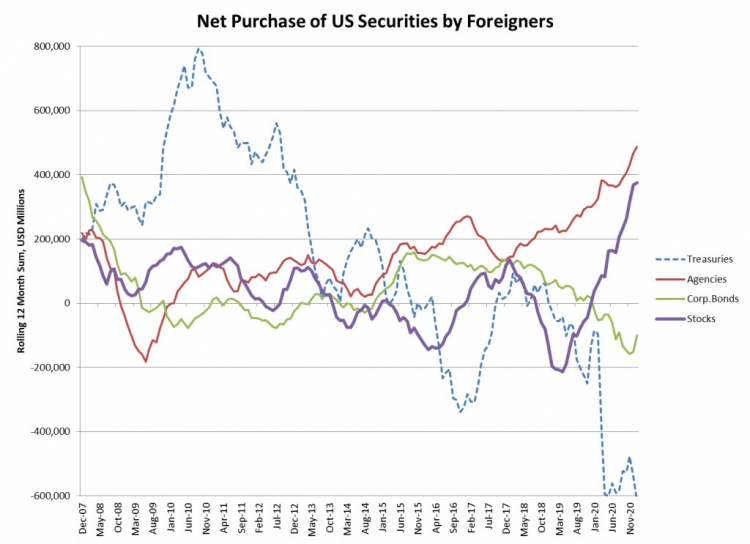
The Federal Reserve has kept short-term interest rates low by monetizing debt, but long-term Treasury yields have risen by more than a percentage point since July. Markets know that what can’t go on forever, won’t. At some point, private holders of Treasury debt will liquidate their holdings – as foreigners have begun to do – and rates will rise sharply. (See Figure 2.)
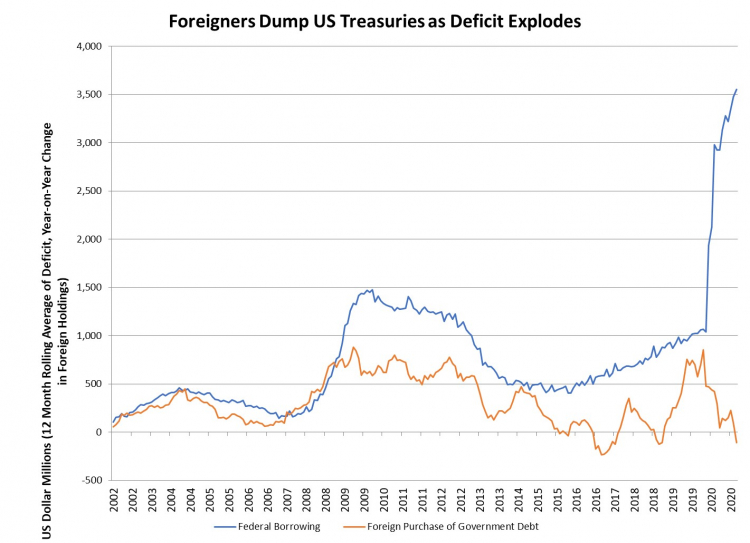
The flood of federal spending has had a number of dangerous effects already. The U.S. trade deficit in goods as of February 2021 reached an annualized rate of more than $1 trillion a year, an all-time record. Input prices to U.S. manufacturers in February rose at the fastest rate since 1973, according to the Philadelphia Federal Reserve’s survey. And the Producer Price Index for final demand rose at an annualized 11% rate during the first quarter.
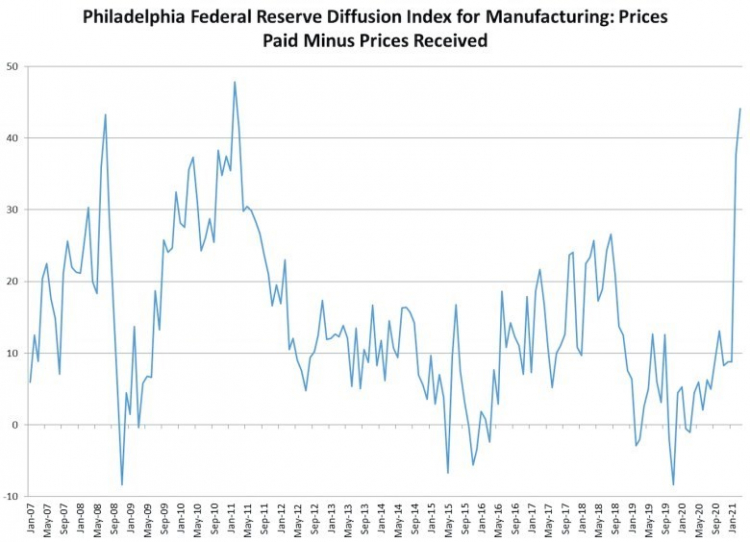
If foreigners are net sellers of U.S. Treasury securities, how is the United States financing an external deficit in the range of $1 trillion a year? The answer: by selling stocks to foreigners, according to Treasury data. (See Figure 4.) Foreign investors have been dumping low-yielding U.S. Treasuries and corporate bonds during the past year, according to the Treasury International Capital (TIC) system. Foreign investors bought $400 billion of U.S. equities and nearly $500 billion of U.S. agency securities (backed by home mortgages) during the 12 months through January but sold $600 billion of Treasuries and $100 billion of corporate bonds.
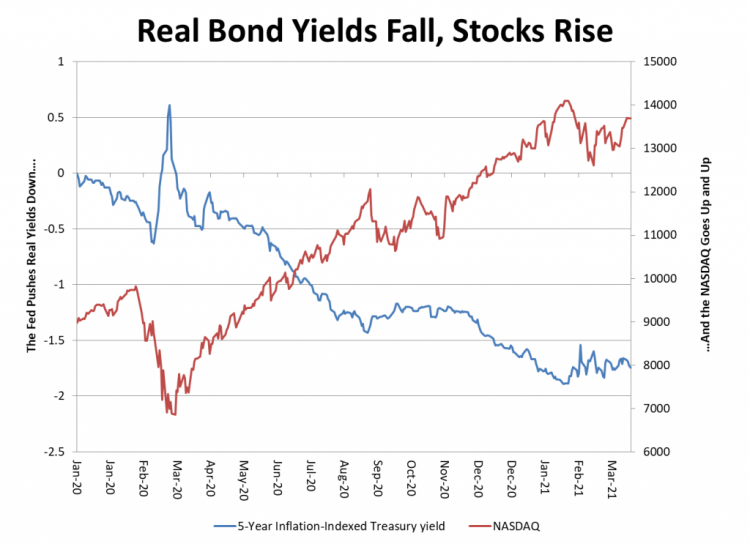
This is a bubble on top of a bubble. At some point, foreigners will have a bellyful of overpriced U.S. stocks and will stop buying them. When this happens, the Treasury will have to sell more bonds to foreigners, but that means allowing interest rates to rise, because foreigners won’t buy U.S. bonds at extremely low yields. Rising bond yields will push stock prices down further, which means that foreigners will sell more stocks, and the Treasury will have to sell more bonds to foreigners, and so forth.
Today the U.S. Treasury market is the weak link in the financial system, supported only by the central bank’s monetization of debt. If the extreme fiscal profligacy of the Biden administration prompts private investors to exit the Treasury market, there will be no safe assets left in dollar financial markets.
The overwhelming majority of over-the-counter (privately traded) derivatives contracts serve as interest-rate hedges. Market participants typically pledge Treasury securities as collateral for these contracts. The notional value of such contracts now exceeds $600 trillion, according to the Bank for International Settlements. Derivatives contracts entail a certain amount of market risk, and banks will enter into them with customers who want to hedge interest-rate positions only if the customers put up collateral (like the cash margin on a stock bought on credit). (See Figure 5.) The market value (after netting for matching contracts that cancel one another out) is about $15 trillion. If the prices of Treasury securities fall sharply, the result will be a global margin call in the derivatives market, forcing the liquidation of vast amounts of positions.
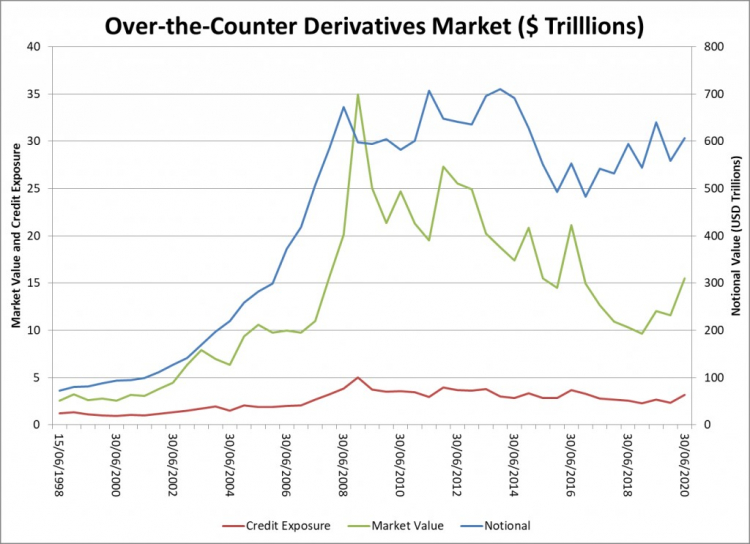
Something like this occurred between March 6 and March 18, 2020, when the yield on inflation-protected U.S. Treasury securities (TIPS) jumped from about negative 0.6% to positive 0.6% in two weeks. The COVID-19 crash prompted a run on cash at American banks, as U.S. corporate borrowers drew down their credit lines. U.S. banks in turn cut credit lines to European and Japanese banks, which were forced to withdraw funding to their customers for currency hedges on holdings of U.S. Treasury securities. The customers in turn liquidated Treasury securities, and the Treasury market crashed. That was the first time that a Treasury market crash coincided with a stock market crash: instead of acting as a crisis refuge, the Treasury market became the epicenter of the crisis.
The Federal Reserve quickly stabilized the market through massive purchases of Treasury securities, and through the extension of dollar swap lines to European central banks, which in return restored dollar liquidity to their customers. These emergency actions were justified by the extraordinary circumstances of March 2020: an external shock – namely the COVID-19 pandemic – upended financial markets, and the central bank acted responsibly in extending liquidity to the market. But the Federal Reserve and the Biden administration now propose to extend these emergency measures into a continuing flood of demand. The consequences will be dire.
The present situation is unprecedented in another way: not in the past century has the United States faced a competitor with an economy as big as ours, growing much faster than ours, with ambitions to displace us as the world’s leading power. China believes that America’s fiscal irresponsibility will undermine the dollar’s status as world reserve currency.
America has enormous power, but the Biden administration and the Federal Reserve are abusing it. And China is waiting for the next crisis to assert its primacy in the world economy.
David P. Goldman, president of Macrostrategy LLC and Senior Writer at Law & Liberty. He writes the “Spengler” column for Asia Times Online and the “Spengler” blog at PJ Media, and is the author of You Will Be Assimilated: China’s Plan to Sino-Form the World (Bombardier Books) and How Civilizations Die (and Why Islam is Dying Too) (Regnery).





